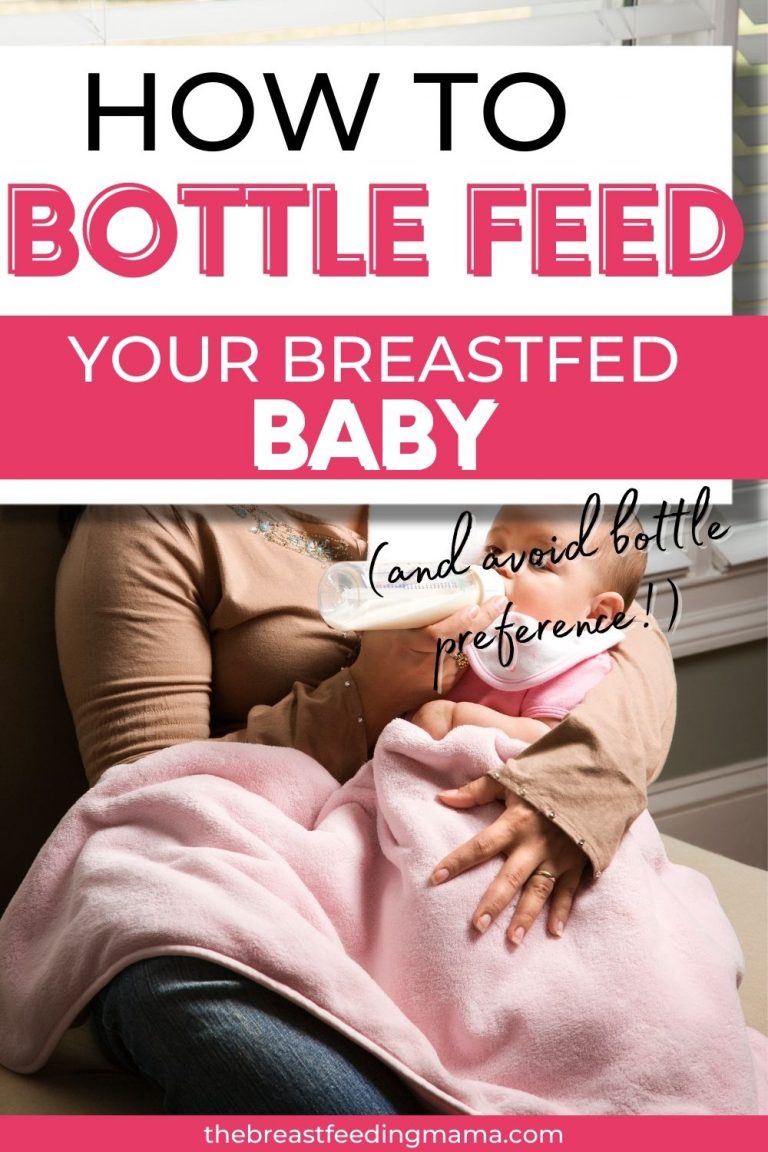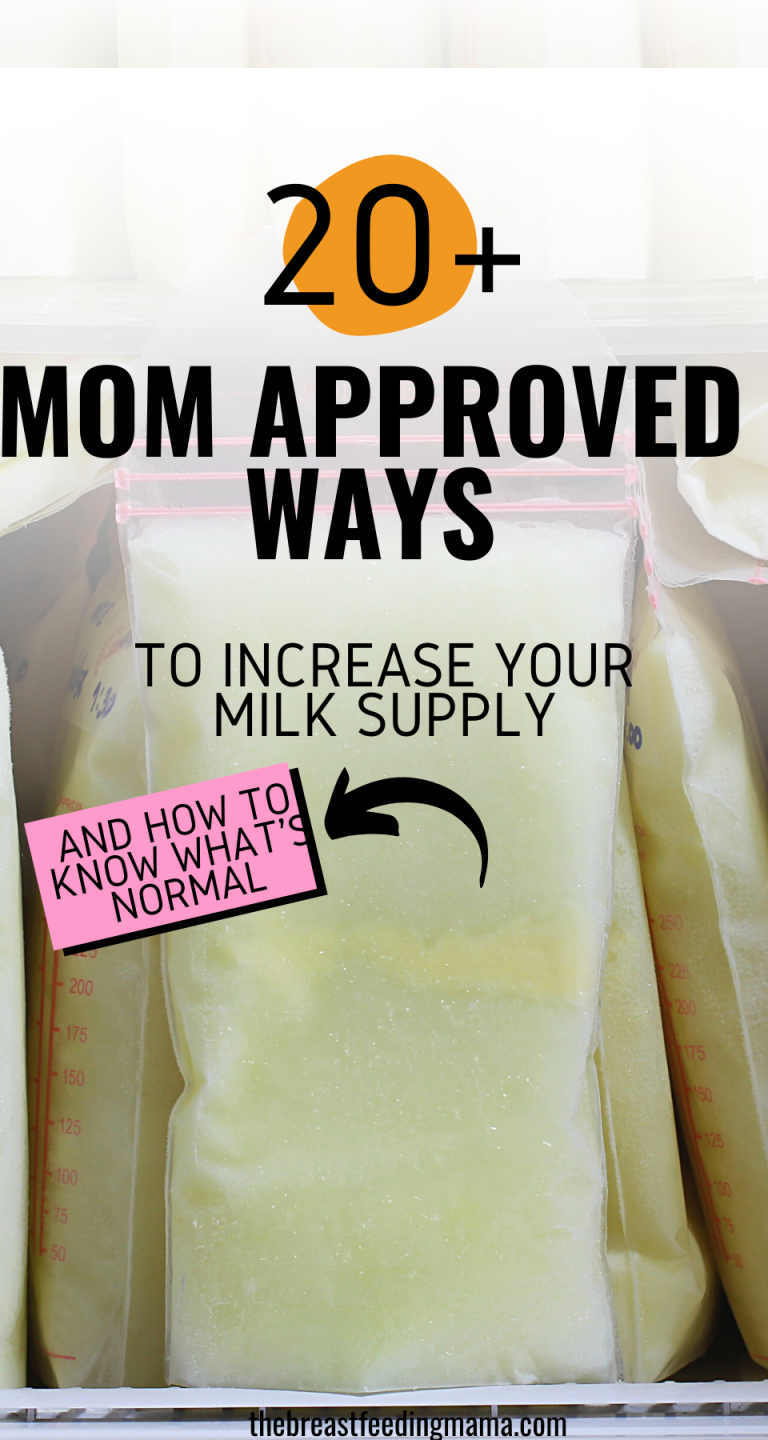12 Triple Feeding Alternatives While Breastfeeding
Breastfeeding doesn’t always go as planned, and many new moms quickly find themselves in an unsustainable cycle of pumping, bottle feeding, and nursing at the breast.
This is often referred to as triple feeding.
It involves a three-step cycle of breastfeeding, supplementing with pumped milk or formula, and then pumping—often recommended for babies who struggle with latching or insufficient milk transfer.
While triple feeding can be a lifeline for some, it’s undeniably demanding and exhausting. Unfortunately, many moms get put on this pathway without ever having the reasons why their baby is struggling looked into.
The point of triple feeding is to give your baby extra milk while stimulating the breast to ensure appropriate milk production. While it is essential to stimulate the breast enough (which can be more difficult with supplemental feeds), there is room to discuss stimulation at other times.
As an IBCLC, I used to recommend this more than I do now because I think there are better ways to navigate situations where triple feeding might be necessary. When I do use it, it’s very short term – and I believe in giving options.
While I ultimately recommend working with an IBCLC (my team of virtual consultants would LOVE to help you – learn more here!), here are some options to consider as an alternative to triple feeding. Please keep in mind that not all these options will work for every baby, which is why working with a professional is essential.
When dealing with breast milk intake issues, always monitor your baby’s mi overall behavior, diaper output, and weight gain.
1. Supplemental Nursing System (SNS):
The SNS is a game-changer for many breastfeeding dyads. It involves using a thin tube attached to a bottle of expressed milk or formula taped to the breast. This allows your baby to receive supplemental milk while nursing, stimulating milk production and maintaining the breastfeeding bond.
The downsides to SNS feeding include:
- Can have a difficult learning curve
- Higher likelihood of milk spillage/waste
- Most SNS systems out there aren’t amazing and can be expensive
2. Switch Feeding:
Switch feeding involves alternating breasts multiple times during a feeding session. This technique ensures that your baby receives both foremilk and hindmilk, promoting better satiety and nutrient absorption. This method can also elicit more letdowns per feeding session, which may help with milk supply.
Typically, with switch feeding, I recommend switching to the other breast as soon as the baby starts to act fussy or fall asleep.
3. Hand Expression After Nursing:
After nursing, try hand expressing a little milk to encourage continued milk production and relieve any breast fullness. I usually recommend 3-5 minutes. This gentle stimulation can also help soften the breast for better latching during the next feeding.
4. Hand Expression Throughout the Day:
Incorporate random hand expression sessions throughout the day to boost milk supply and prevent engorgement. Even a few minutes of hand expression can significantly affect milk production.
5. Pump after some feeds:
Instead of adhering to a strict pumping schedule, pump occasionally after a feed where you supplement or whenever you have a moment. This flexible approach may help you to maintain your milk supply without feeling tethered to the pump.
I recommend focusing on the sessions in the morning when prolactin and milk synthesis tends to be higher.
6. Replace full feeds:
Rather than trying to give a small supplement at every feed, you can try giving a few supplemental bottle feedings with a full supplement during the day. You would need to pump at about the same time (you could try pumping before so you could give that milk), but this might make it easier to focus on only one method of feeding at a time.
This works well if you know roughly how much your baby might be getting at the breast during a feed so you can ensure the supplemental feeds are giving the right amount extra.
During other sessions, you could just breastfeed if you feel your baby is getting enough, though you’ll often need to give a supplement.
7. Parallel Pumping:
Instead of waiting to pump after breastfeeding and bottle feeding, you can pump while you nurse on the other side. This could potentially look like this:
- The nurse on the right side
- Switch the baby to the left; put the pump on the right side
- Hand baby off to someone else after finishing on the left side, pump on the left side
You can also alternate pumping on one side or even just nursing on one side while pumping on the other and giving the baby the supplement in the bottle.
While I don’t always recommend wearable pumps, they might be easier to use while parallel feeding since they don’t require as much equipment and fuss. The MomCozy M5 or S12 is an affordable wearable pump option; however, I do find they seem to lose their power rather quickly. The Elvie Stride or Willow Go are better quality for long-term use. Just make sure you have the right sized flange!
8. Power Pumping:
Power pumping mimics cluster feeding and can be done in two ways:
10 minutes on, 10 minutes off for an hour: This intense pumping session signals your body to ramp up milk production.
10 minutes at the top of the hour for three hours: Breaking up the power pumping session throughout the day can be more manageable for some mothers while still yielding similar results.
You can choose to do this around two times during the day.
10. Finish at the Breast
You can give your baby the supplemental bottle first – enough to get them past the hangriness but not enough that they don’t want to breastfeed. I usually recommend 1/4-1/2 ounce.
Depending on the situation, the baby will nurse for longer and stimulate the breast enough to make it so pumping isn’t quite necessary.
11. Limit How Much Pumping
One problem I see with triple feeding is a mom thinks she has to pump for a full pumping session after the nursing session.
If the baby is nursing at all at the breast – you don’t need a full pumping session. Five minutes for every ounce given is usually enough.
12. Temporary Exclusive Pumping
Some people avoid this because they worry they’ll never nurse from the breast again. This isn’t true! Sometimes, exclusive pumping while we work on the issues can help maintain your sanity.
When you do this, make sure you are paced bottle feeding and still offering the breast a few times a day for comfort feeds to ensure your baby is still familiar with the breast.
Why Triple Feeding Can Be Difficult
Triple feeding is undeniably challenging for several reasons:
- Time-consuming: Constantly cycling between breastfeeding, supplementing, and pumping leaves little time for rest or other activities.
- Exhausting: The physical and emotional toll of round-the-clock feeding and pumping can be draining for parents.
- Isolating: Spending hours tethered to the pump or nursing chair can lead to feelings of isolation and frustration.
- Mental strain: Balancing the demands of triple feeding while caring for a newborn can take a toll on mental health, leading to stress and anxiety.
I want you to have the confidence to breastfeed for as long as YOU want without all the stress and guilt. That’s why Fuss-Free First Year is the ultimate solution to all those MOTN questions and frustrations where you don’t know where to turn. Join this amazing community and resource today for more stress-free breastfeeding.
While triple feeding may be necessary for some breastfeeding journeys, exploring alternatives and strategies that prioritize your baby’s nourishment and well-being is essential.
Whether you opt for the SNS, switch feeding, or incorporate random hand expression, remember there’s no one-size-fits-all approach. Trust your instincts, seek support from lactation professionals, and be kind to yourself as you navigate this challenging but rewarding chapter of motherhood.







